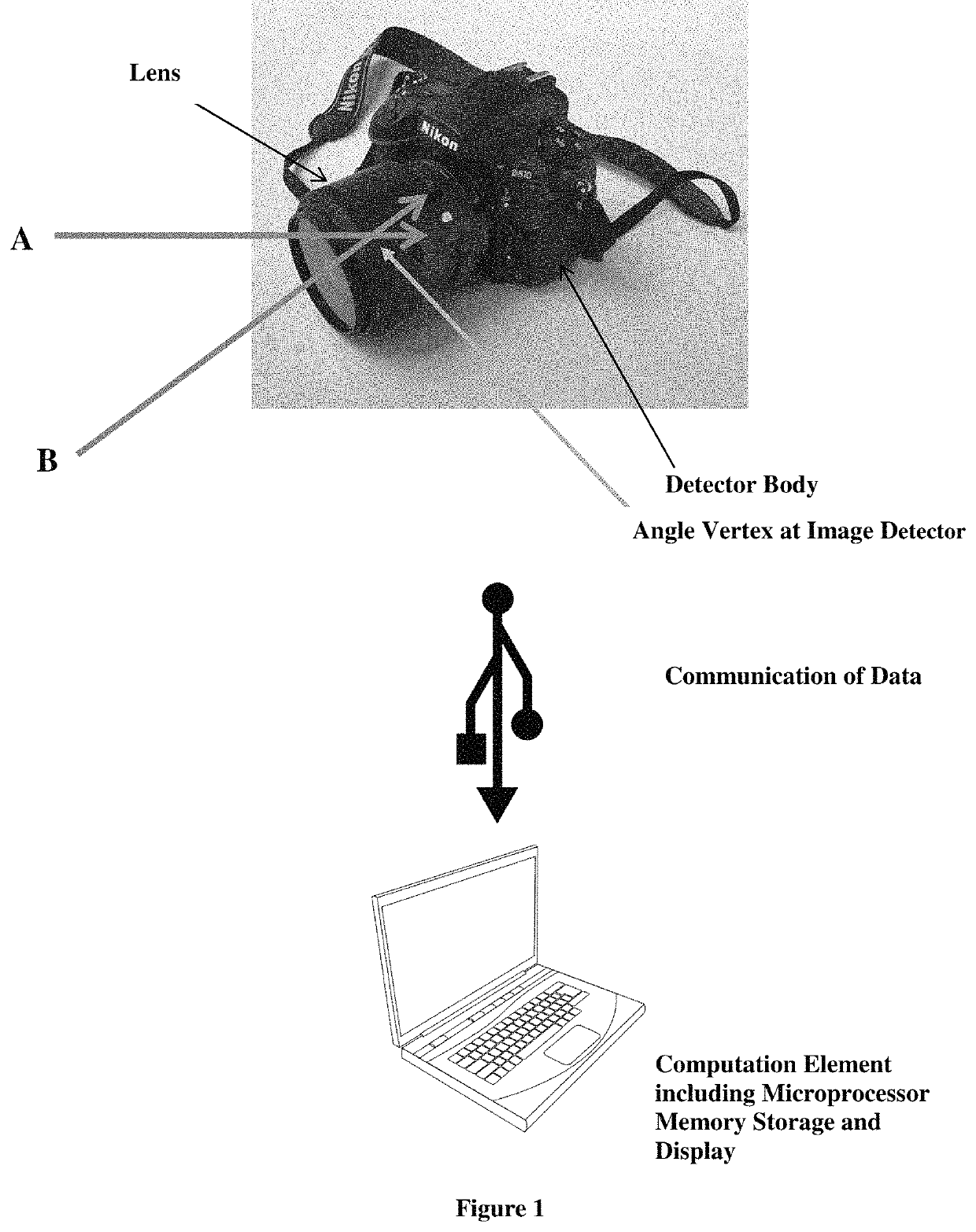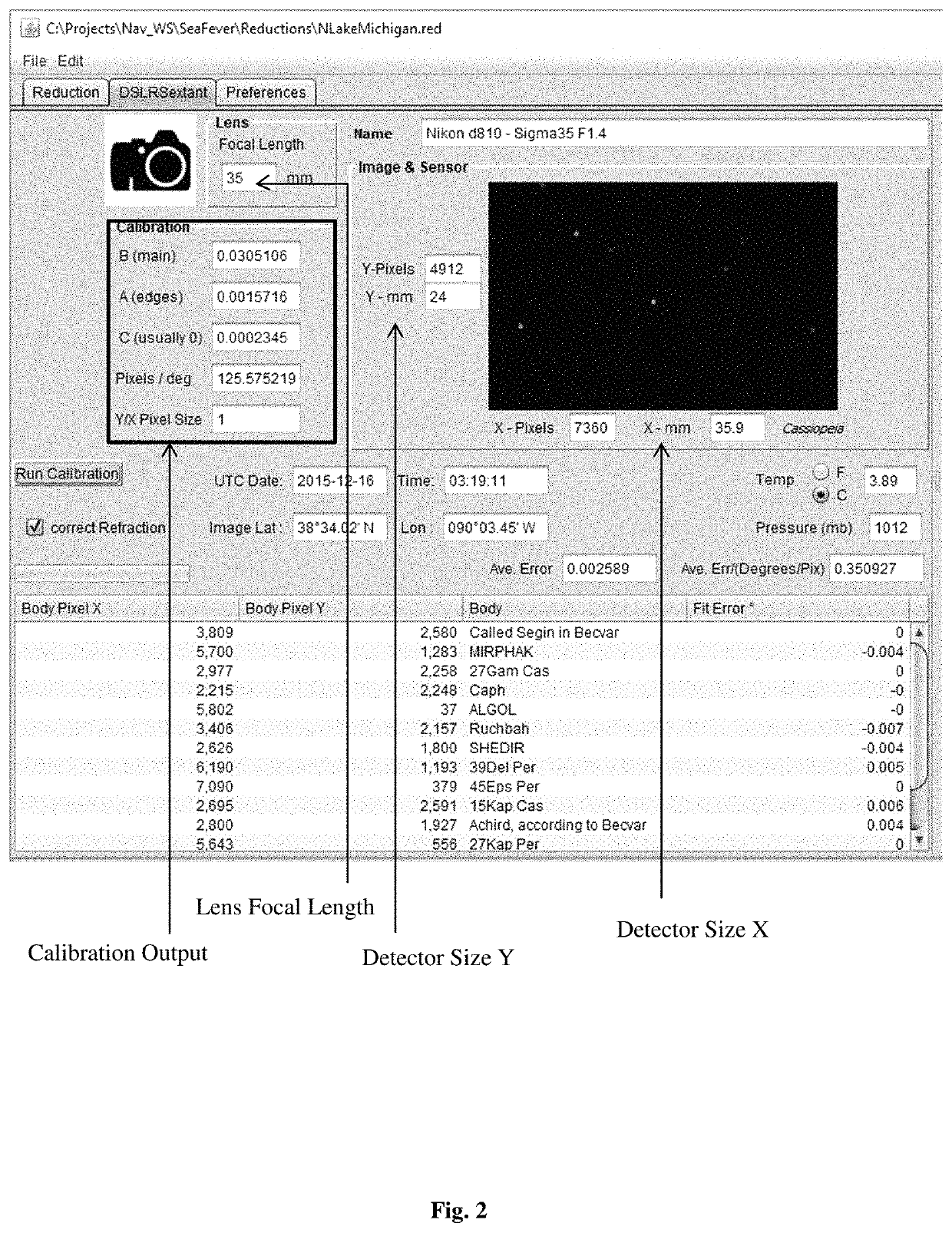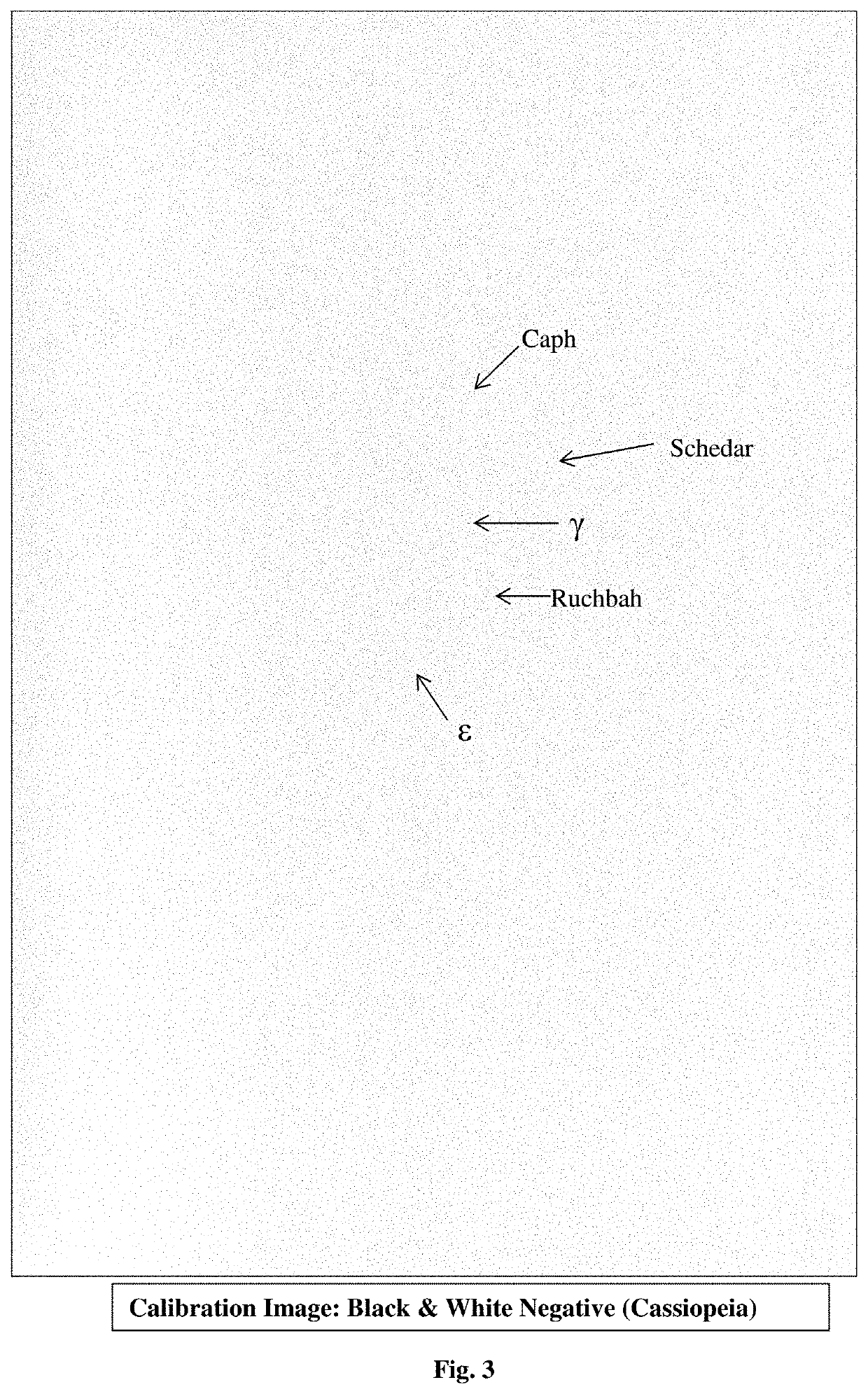System and method for a digital image sextant
a digital image and sextant technology, applied in the field of sextants and navigation, can solve the problems of difficult to accurately capture useful angular measurement like, the need for an alternative and independent positioning system to gps remains undiminished, and the difficulty of accurately manipulating the devi
- Summary
- Abstract
- Description
- Claims
- Application Information
AI Technical Summary
Benefits of technology
Problems solved by technology
Method used
Image
Examples
example 1
Jupiter Fla., South of Jupiter Inlet
I Digital Image Sextant (DIS)
[0070]Referring to FIG. 1, illustrated in this exemplary embodiment is a system for measuring angular distances. The system comprises an imaging device which includes a lens, a digital image detector, a means of storage of captured digital images, a computational element, with digital memory storage, including non-transitory computer memory, a means to input data, and a display. The computational element further comprises computer software, or computer readable institutions to enable the system as disclosed herein. A means to communicate digital information, including images, between the image detector to the computations element is indicated. The exemplary embodiment in FIG. 1 is a system comprised of digital camera in communication with a personal computer containing software, via a USB portal. The computational element or computational hardware and software including computer readable instructions enable it to deter...
example 2
Lake Michigan
Experimental Conditions
The Digital Image Sextant (DIS)
[0168]The celestial fixes presented in Example 2 were all made with the same DSLR (Digital Single Lens Reflex Camera) and lens: a Nikon D-810® camera and Sigma DG 067® (35 mm F1.4) lens.
[0169]The dimensions X, Y and pixels M, N of the CMOS detector are,[0170]X=35.9 mm & M=7360 pixels.[0171]Y=24.0 mm & N=4912 pixels
[0172]The field of view (FOV) is 54.3 degrees of arc calculated as follows:
[0173]FOV=2tan(sizeX2*FocalLength)=2atan(35.9mm2*35mm)=54.3degrees
[0174]Exposure parameters are designed to accommodate measurements taken on moving platforms. All images were taken hand held.[0175]Exposer time: 1 / 125 sec[0176]ISO Speed: 12,800[0177]F-Number: variable
Procedure
[0178]The Yale Bright Star Catalog (Hoffleit, et al., “The Bright star catalogue.” New Haven, Conn.: Yale University Observatory, c1991, 5th rev. ed., edited by Hoffleit, Dorrit; Jaschek, Carlos (1991)) was incorporated into the celestial n...
PUM
 Login to View More
Login to View More Abstract
Description
Claims
Application Information
 Login to View More
Login to View More - R&D
- Intellectual Property
- Life Sciences
- Materials
- Tech Scout
- Unparalleled Data Quality
- Higher Quality Content
- 60% Fewer Hallucinations
Browse by: Latest US Patents, China's latest patents, Technical Efficacy Thesaurus, Application Domain, Technology Topic, Popular Technical Reports.
© 2025 PatSnap. All rights reserved.Legal|Privacy policy|Modern Slavery Act Transparency Statement|Sitemap|About US| Contact US: help@patsnap.com



